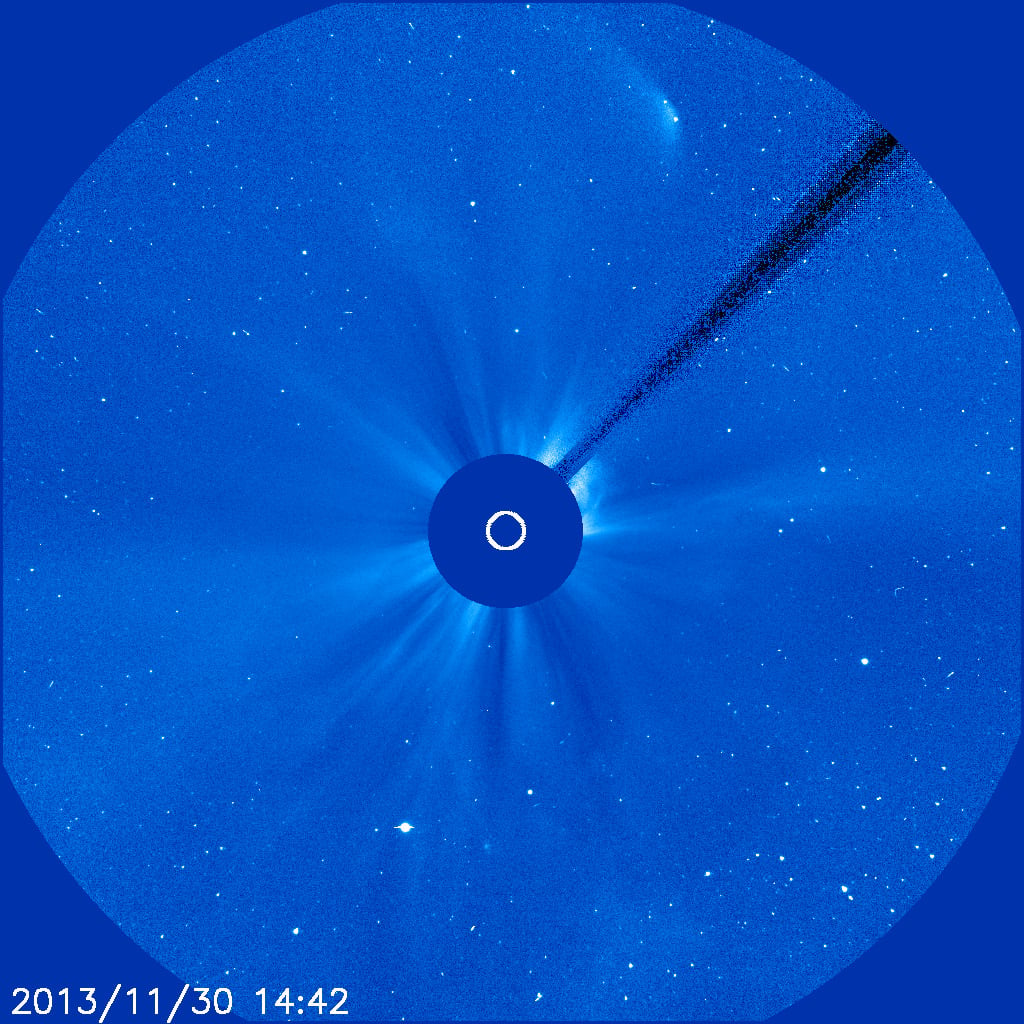A brief morning update (EST) from Karl Battams, who studies sungrazing comets at the Naval Research Laboratory, confirms social media reports that Comet C/2012 S1 ISON appears to be getting fainter in images from the Solar and Heliospheric Observatory (SOHO). (To compare, you can see older images below the jump.)
"Comet #ISON really is fading fast and I no longer see any sign of a "central condensation" (i.e. no obvious indication of a nucleus...)," Battams
wrote on Twitter
. "I do think that something emerged from the Sun, but probably a v.small nucleus or "rubble pile", and I fear that may have now dissolved."
This comet, however,
has defied predictions over and over again
. We'll keep you posted as to its progress.
Astronomers wrote off Comet ISON on Thursday (Nov. 28) shortly after it rounded the sun, but it brightened considerably afterwards and researchers said it's possible a small nucleus did survive the close encounter. Battams previously noted ISON's behavior is much different than the other 2,000 or so sungrazers he's observed.
The comet was discovered Sept. 21, 2012 by Artyom Novichonok and Vitali Nevski while conducting the International Scientific Optical Network (ISON) survey and has been the subject of
intense speculation about its brightness prospects
since.
[caption id="attachment_106838" align="alignnone" width="580"]
Bright, brighter, brightest: these views of Comet ISON after its closest approach to the sun Nov. 28 show that a small part of the nucleus may have survived the encounter. Images from the Solar and Heliospheric Observatory. Credit: ESA/NASA/SOHO/GSFC[/caption]
 Universe Today
Universe Today
